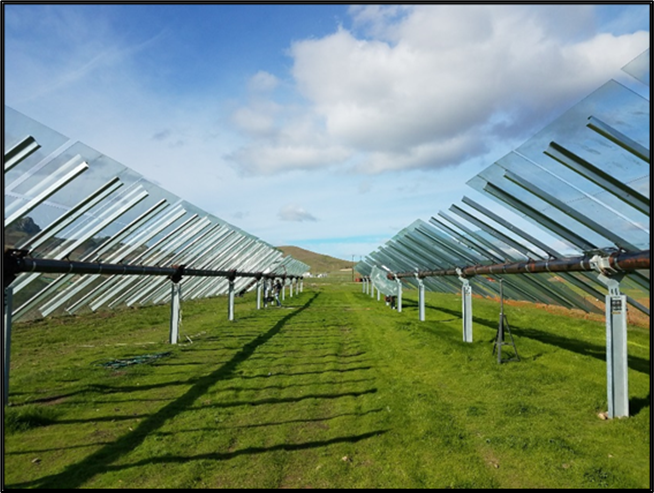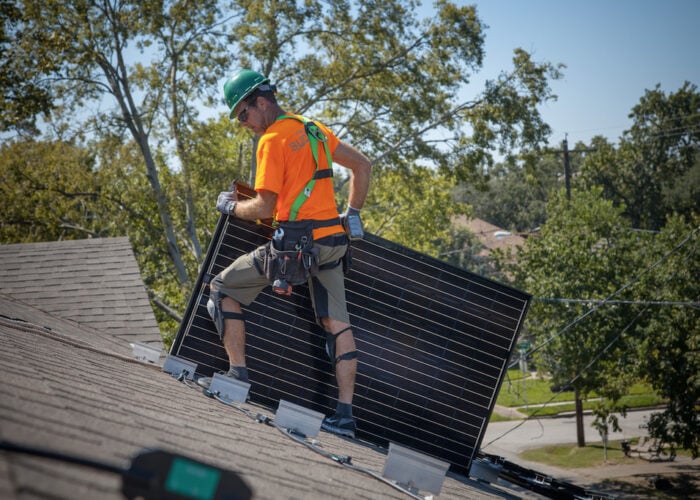
PV Tech and Sun and Steel Solar are co-hosting a webinar exploring how simplistic tracker designs can cut Capex, EPC and O&M costs over more complicated designs. The webinar, which is free to attend, is being hosted at 08:00 PST / 09:00 EST / 16:00 GMT / 17:00 CET on Wednesday 10 November 2021. To register for the webinar, please click here.
Sun and Steel Solar LLC began in 2017 and has developed a single axis tracker for PV solar farms to be the better mousetrap of trackers by leapfrogging the competition and their status quo. Simplicity being the ultimate in sophistication, the product is designed to deliver the truest, lowest total cost of ownership, unparalleled reliability, and satisfaction to all stakeholders.
Unlock unlimited access for 12 whole months of distinctive global analysis
Photovoltaics International is now included.
- Regular insight and analysis of the industry’s biggest developments
- In-depth interviews with the industry’s leading figures
- Unlimited digital access to the PV Tech Power journal catalogue
- Unlimited digital access to the Photovoltaics International journal catalogue
- Access to more than 1,000 technical papers
- Discounts on Solar Media’s portfolio of events, in-person and virtual
Product outline
This tracker is based on the inventor Robert Dally’s 42 years of PV experience and 17 years of tracker experience (two previous tracker developments in 2004 & 2007 installed in 600MW of projects internationally).
It places PV modules either two in portrait (2P) or three or four in landscape (3L & 4L), which can be attached one module at a time or as pre-assembled “panels” (2 purlins + 2, 3, or 4 PV modules) that can be assembled offsite or in an on-site comfortable tent (rain or shine) for high levels of consistency (quality, reliability) and ease and speed of EPC attachment to the torque tube. These independent “panels” do not require pre-placement nor precise placement of the purlins, but allows for quick placement and simple adjustment, as needed.
There are no slippery plastic bushings at the steel-on-steel bearings, but round steel journals fitting loosely in round steel bearing races, performing as general guides to hold the torque tube in place, not as typical tight-fitting bearings requiring strict alignment, with ample friction for damping the wind, and natural electrical conduction to ground each post, all facilitating assembly, performance, and cost reduction.
The drive system consists of two 48” radius half-pulleys attached to the torque tube that are turned east and west by a redundant pair of wire cables pulled by one small size slew drive for an 8:1 leverage. All wiring is on the fixed portion of the drive system, avoiding any moving wires that must last 30+ years (~20,000 east-west cycles).
The PV modules (2P or 4L) are slightly sloped on each side to lower the centre of gravity, assist in wind tolerance, prevent sediment ponding, and lower PV operating temperature via the chimney effect.
The torque tube is round at about 10 inches in diameter to deliver the lowest kg/kW. The posts can be steel I-Beams or cold formed steel, telephone poles, or reinforced concrete piles. All steel can forego hot dip galvanisation for further savings in some environments. Each independent row holds approximately 50kW of PV and is sized ~ 4.5 meters x 60 meters. Again, where the status quo adds complexity to outdo competitive systems, our technology employs simplicity to reduce cost in material (CAPEX), construction and PV attachment (EPC), and O&M (OPEX) of the system and the weeds. A 7-minute YouTube video of the prototype testing and CGI of the intended final product can be seen here.
Problem
Alternative trackers on today’s market add complexity in their attempt to outshine their competitors, which ultimately drives up the triple cost of CAPEX, EPC, and OPEX (30+ years of O&M). First, they reduced the steel to lower CAPEX, then added dampers with limited effect to fight wind gallop of their flimsy structure, and now with larger and heavier modules the competition is adding drives at each post, driven by a daisy chain of spinning drive shafts; they have replaced uncomplicated steel (strong torque tube) with complicated steel (transmissions with gears and oil and seals), introducing risk.
Solution
Sun and Steel Solar’s round torque tube uses 25% less steel for the same torsional strength as other trackers’ square tubes. Its steel-on-steel bearings are natural dampers via friction, transfer the ground path to the posts, forego plastic bushings, couple the torque tube sections, have thrust stops to prevent north-south movement from terrain slopes or seismic events and have east/west limit stops to dump backside wind torque into the posts. Cost saving options include foregoing hot dip galvanizing, choosing field welded option over field bolt-together option, use of local labour content or reduction of labour in high labour cost markets, and PV modules slightly sloped for wind, a lower centre of gravity, prevention of sediment ponds, and unparalleled aesthetics. A single programmable logic controller (PLC) tracks and backtracks an immense number of rows, further reducing cost, increasing reliability, and having hardened one-way control.
Applications
This tracker serves the commercial and utility PV solar farm market. One tracker row carries about 50kW of PV; mono-facial, bi-facial, small and large format modules.
Platform
Each row is independent, with no obstructions for machinery (EPC, O&M, agricultural) to freely travel row to row (east-west) and down the aisles (north-south).
Availability
Having proceeded through prototype testing, Sun and Steel Solar is currently seeking Round A funding ($2.5 million for 25% equity) or an M&A activity to bring the product to market by Q4 2022.







